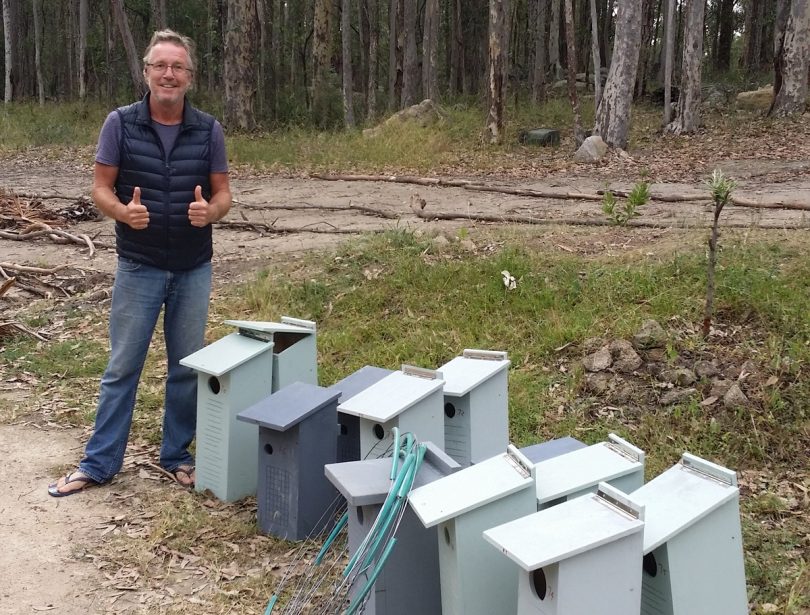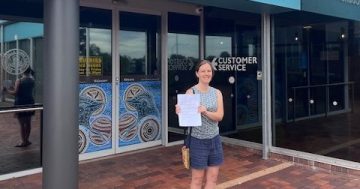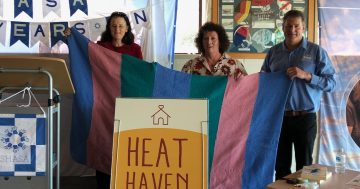
James Riccard has helped install 21 nesting boxes adjacent to bushfire affected properties at Mogendoura. Photo: Supplied.
Nesting boxes are helping Eurobodalla’s wildlife recover from the bushfires after generous donations from community groups along Australia’s east coast, and as far away as the Macedon Ranges in Victoria.
Eurobodalla Shire Council has been working with local landholders since February to install around 400 nesting boxes, some of which were occupied by wildlife within a week of installation.
Council’s natural resource officer Courtney Fink-Downes said council received humbling offers of help from far and wide, including from her own hometown in the Macedon Ranges.
In between the bushfires and COVID-19, Courtney and her two boys flew to Victoria to see family and brought home nesting boxes on the plane instead of their luggage.
“Council received a WIRES grant, and we’ve also been helping local community groups construct nesting boxes,” she says.
“The Narooma Men’s Shed has been absolutely tenacious with their efforts to provide large numbers of perfectly constructed nesting boxes.
“Our local Landcare volunteers spent countless hours painting the boxes, which will protect them from the weather for decades to come.”
While natural hollows are by far the best nesting option for native wildlife, Courtney says that due to the severity of the bushfires, they’ve needed a helping hand.
“The boxes are designed to certain specifications to meet the needs of various animals from small gliders to a range of bird species,” she says.
“There are still nesting boxes available for rural landholders who have either unburnt bushland near burnt areas, or have burnt bush where wildlife is starting to return.”
Native mammals are dependent on tree hollows to sleep in during the day and for breeding. Around 30 per cent of Australian native mammals use tree hollows, including birds, bats, possums, gliders, quolls, native rats, dunnarts, phascogales, cuscus, numbats and antechinus.
If you think you have the right property to provide new homes for wildlife, contact Eurobodalla Shire Council’s Courtney Fink-Downes by email or phone 0427 401 036.
For more information about nesting boxes, visit Nest Box Tales.









